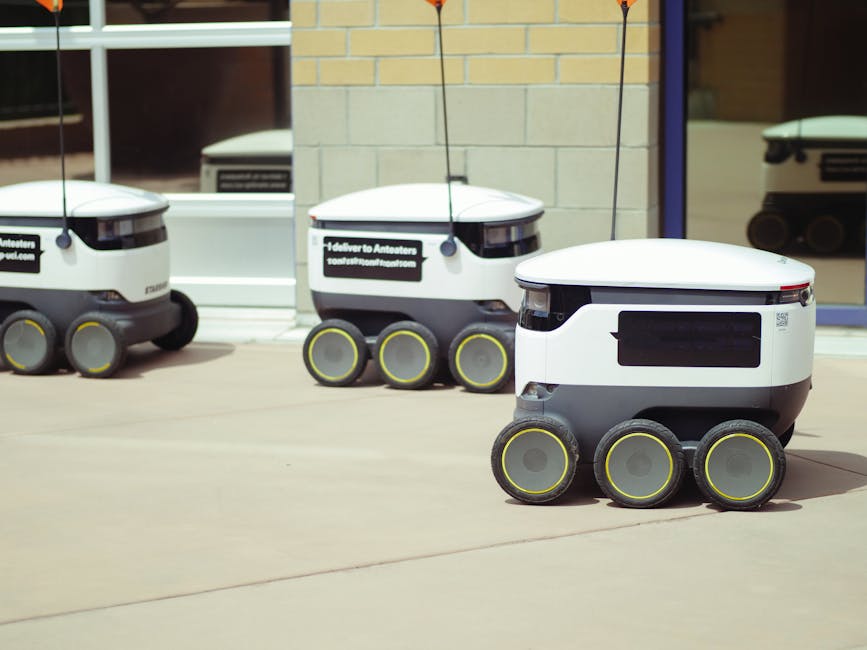Smarter Homes, Smarter Living
Welcome to the age of responsive living spaces. In 2024, smart homes are no longer just equipped with devices they’re powered by systems that learn, adapt, and optimize based on your habits and preferences.
AI Powered Personalization
Gone are the days of static home automation. Today’s AI integrated smart homes actively learn how you live and continuously evolve.
Lights adjust based on time of day and usage patterns
Thermostats fine tune themselves based on your comfort history and weather forecasts
Security systems distinguish known residents from potential threats using facial or behavioral recognition
Appliances That Think Ahead
Energy efficiency isn’t just a feature it’s a core function. Modern appliances now handle real time energy audits and optimize themselves to reduce waste.
Refrigerators track food spoilage and suggest grocery lists based on usage
Washers run when electricity rates drop
Ovens preheat themselves based on routine meal prep schedules
Voice First Living
Voice control has become the central interface of the modern home, going beyond convenient commands to serve deeper needs.
Voice assistants now monitor your health, offering reminders based on behavior and biometrics
Integrated systems arm alarms, lock doors, and dim lights all hands free
Seamless integration with healthcare apps makes it easier to manage wellness from your living room
Smart homes are no longer a futuristic concept they’re shaping how we live today. Efficiency, safety, and comfort are just the beginning.
Personalized Healthcare Tech
Technology is revolutionizing the way we understand and manage our health turning passive monitoring into proactive care. Personalized healthcare is no longer limited to hospitals or labs; it’s entering homes with precision, immediacy, and intelligence.
Predictive Wearables: Beyond Fitness Tracking
Modern wearables now do far more than count steps or monitor heart rate. Equipped with advanced sensors and machine learning capabilities, these devices can detect irregular patterns and predict health issues before symptoms appear.
Track respiration, temperature, and heart rate variability in real time
Flag potential illnesses days in advance through biometric trends
Integrate with medical platforms for instant alerts and guidance
These insights empower users to respond early shifting healthcare from reactive to preventative.
At Home Diagnostics: Lab Testing Without the Lab
Home testing kits have grown well beyond basic pregnancy tests or glucose monitors. They now offer:
Instant blood analysis for vitamin deficiencies and markers like cholesterol
Hormone tracking to inform fertility, sleep, and mental health
Genetic panels that map predispositions to conditions or reactions to medications
Most of these kits pair with mobile apps that break down results in clear language and connect users with certified professionals when needed.
The Rise of AI Doctors and Smarter Telemedicine
Telehealth is shifting again this time with artificial intelligence embedded in the process.
AI driven platforms assist in diagnosing and recommending care paths based on real time patient input
Chatbots conduct primary intake, triage symptoms, and escalate to human doctors only when necessary
Virtual check ins are enriched through data from wearables and diagnostics, making consultations more efficient and informed
By 2026, many routine appointments may happen entirely through intelligent platforms cutting wait times, increasing access, and reducing costs.
The bottom line? Healthcare is becoming predictive, customized, and accessible all from your living room.
Mobility Reimagined

The way we move through cities and communities is undergoing a radical transformation. Advances in transportation technology are no longer theoretical they’re actively being integrated into everyday infrastructure planning.
Smart Transit: Self Driving Goes Public
Self driving technology has leapt from private prototypes to public systems. Cities around the world are beginning to integrate autonomous buses, trams, and shuttles into their urban transit networks.
Autonomous public transit routes now included in long term city planning
Navigation systems dynamically adjust to real time traffic conditions
Reduced accidents, lower emissions, and 24/7 availability
These systems are already operational in select pilot regions, setting the stage for wider adoption in the next two to five years.
Next Gen Rail: Hyperloop and Maglev
Futuristic transport like the Hyperloop and magnetic levitation (Maglev) trains are moving beyond the lab.
Pilot programs being tested in North America, Europe, and parts of Asia
Ultra high speed transit connecting city hubs in record time
Noise reduction and minimal environmental impact compared to air travel
These innovations could redefine commuter expectations by dramatically shortening travel time between major metro regions.
Charging On the Go: EV Infrastructure Evolves
Electric vehicles (EVs) are here to stay but now there’s a push to make charging even more seamless.
Inductive charging technology installed directly into public roads
Vehicles recharge automatically while in motion or at traffic signals
A major step towards eliminating range anxiety for EV users
This blend of mobility and infrastructure represents a new era: transit systems that are sustainable, efficient, and designed to serve modern lifestyles.
Renewable Power at the Core
The energy game has changed. Solar is no longer the expensive, idealistic cousin in the power family it’s now cost competitive with fossil fuels in most regions. Panels are cheaper, more efficient, and easier to integrate. People aren’t just switching to solar; they’re building whole ecosystems around it.
That’s where microgrids come in. These small scale, self contained power networks are popping up in neighborhoods, rural towns, and even individual homes. They’re reliable, decentralized, and keep everything running even if the big grid goes down. In a world of climate instability and rising utility costs, that kind of independence isn’t a luxury it’s a smart play.
Meanwhile, buildings are stepping up. Smart architecture and materials now make it possible for homes and commercial spaces to produce more energy than they consume. Think solar panels, geothermal systems, dynamic insulation, and AI that manages them all.
This isn’t future talk. It’s the present getting sharper. Explore more in How Renewable Energy Tech is Powering the Future.
Augmented Reality Goes Mainstream
Forget everything you thought you knew about screens. In 2024, AR glasses aren’t just a novelty they’re replacing your phone, your laptop, even your dashboard. Navigation overlays aren’t stuck inside apps anymore. They’re floating in front of your face as you walk. Text messages blink into view mid stride. Work docs follow your gaze from kitchen counter to subway seat. It’s hands free and frictionless.
But it’s not just utility it’s immersion. From museum tours where historical figures talk to you directly, to retail spaces that let you try on clothes or superimpose a couch in your living room, AR isn’t enhancing reality anymore it’s rewriting the rules for how we interact with the world. Schools are diving in too. Interactive science labs, 3D history timelines, and spatial learning environments are reshaping how students engage with content.
Underlying all of this is spatial computing tech that understands where you are, what you’re doing, and how digital elements should behave in your environment. It’s the bridge between real and virtual, and in 2024, that bridge just became a highway. If reality had a software upgrade, this would be it.
The Takeaway
What used to be called “cutting edge” is now just… life. Tech isn’t riding shotgun anymore it’s driving. Smart homes, wearable diagnostics, and self moving vehicles aren’t experiments. They’re infrastructure. Embedded, normalized, everywhere.
This isn’t about staying current. It’s survival. Adaptation is the baseline now, not the bonus. If you’re not integrating tech into your routine your health, your home, your commute you’re already behind.
The shift is deep. You wake up, and your thermostat’s adjusted itself. Your smartwatch pings a hydration reminder based on perspiration data. Your car? Maybe it already left the garage to pick up groceries.
From how we plan cities to how we check our vitals, the line between digital and real is gone. Resisting the tools isn’t noble it’s expensive. The smartest move you can make now is to stop treating this tech as optional.
Because it’s not going anywhere. And neither are you, unless you plug in.
